Mojuro arrived as a shocking continuation of the Jujutsu Kaisen saga, and when the original series came to its explosive conclusion, fans were left with a mixture of awe, heartbreak, and questions. Gege Akutami had spent years weaving a story about curses, trauma, and the fragility of humanity, and though the finale was bold, it left behind dangling mysteries and unresolved threads.
The surprise new serialization doesn’t just revisit familiar ideas; it reshapes them, setting the stage for an intergenerational saga that blends legacy, alien influence, and the evolution of sorcery itself. For fans, Mojuro isn’t just a sequel; it’s a blueprint for what the Jujutsu Kaisen.
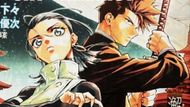
The first chapter of Mojuro immediately establishes its place in history: decades after the Culling Games, long after Yuji, Megumi, and Gojo shook the foundations of jujutsu society. Humanity has changed. Sorcery has weakened. The world has become interconnected with forces beyond Earth. And yet, old wounds still linger.
The inclusion of Okkotsu Yuta’s descendants, particularly Yuka and Tsurugi, cements the continuation of the legacy as a central theme. Yuta himself, once the “outsider” of Jujutsu Kaisen's main cast, is now remembered as a grandfather figure whose influence passes down through family bonds. His ring becomes a cursed heirloom, sparking sibling rivalry and shaping Yuka’s drive to prove herself.
This shift into the generational makes Mojuro feel almost like Boruto or Dragon Ball GT, but with a key difference: it’s not about recycling the old, but about forcing the next generation to confront problems born from both curses and humanity’s failures.
From curses to aliens: The next step in evolution
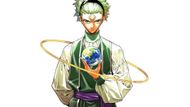
One of the most fascinating fan theories emerging around Mojuro is that humans and curses are evolving toward becoming something else entirely - aliens. This theory builds on the appearances of characters like Tengen, Sukuna, and Kashimo, who all displayed evolutionary traits: multiple eyes, extra arms, and inhuman features that set them apart from ordinary sorcerers.
These traits suggest a progression: humans who push past their limits gain monstrous, alien qualities, while curses grow more human-like in behavior and form. In this interpretation, aliens are not outsiders but the natural middle ground between the extremes of curses and humans.
Sorcery and cursed energy, then, are not just cultural phenomena; they’re stages in evolution. If true, this would mean Mojuro isn’t just about a galactic twist, but about redefining the very nature of life in the Jujutsu Kaisen universe.
Sorcerers, warlocks, and a changing society in Mojuro
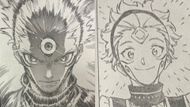
The introduction of extraterrestrial beings, particularly the Simurians, forces sorcerers to interact with outsiders who share similar powers. This raises profound questions about identity: if cursed energy is tied to emotions and humanity, what happens when aliens can use or evolve into similar abilities?
The terminology shift to “warlocks” in the first chapter hints at a cultural evolution in how sorcerers are perceived. Just as curses blurred the lines between human and inhuman in Jujutsu Kaisen, Mojuro blurs the distinction between Earth and cosmos. Sorcerers are no longer fighting to protect Japan from curses; they’re representing Earth in a broader, interstellar arena.
The legacy of Gojo, Sukuna, and Yuji
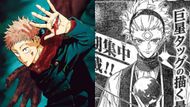
While Mojuro takes place far beyond their lifetimes, the legacies of Gojo, Sukuna, and Yuji loom large.
- Gojo’s “Six Eyes” might now be recontextualized as a reference to evolutionary advancement, connecting back to theories that the most powerful beings evolve toward alien-like traits.
- Sukuna, remembered as both humanity’s greatest curse and most terrifying sorcerer, becomes a mythological benchmark. What does it mean to surpass someone who blurred the line between curse and human?
- Yuji, the vessel of Sukuna and the heart of Jujutsu Kaisen's story, represents the bridge between ordinary humanity and monstrous legacy. His role in shaping treaties and preventing collapse becomes legendary, with later generations measuring themselves against his sacrifices.
This mythologizing mirrors real-world generational storytelling: the old guard becomes history, but their impact still guides the struggles of the present.
The alien factor: Expanding the Jujutsu Kaisen universe
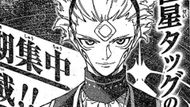
Perhaps the boldest move Mojuro makes is introducing aliens not as a gimmick, but as a natural progression of the story. The Simurians’ arrival forces Earth’s sorcerers to reckon with powers that mirror their own, while also exposing the weakness of modern jujutsu society.
The shift to a cosmic scale doesn’t erase the intimate character struggles JJK is known for; it amplifies them. Instead of curses threatening Tokyo, now the fate of Earth’s sorcery culture is at stake. Yet at its core, it’s still about individuals, Yuka, Tsurugi, and Malu, wrestling with bonds, betrayal, and belief.
The future of Jujutsu Kaisen is not about curses anymore; it’s about what humanity becomes after surviving them. And if Mojuro is any indication, that future will be just as haunting, exhilarating, and unpredictable as the past.
